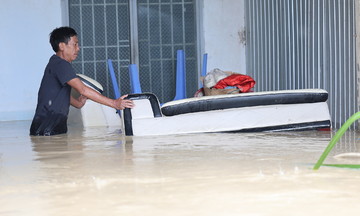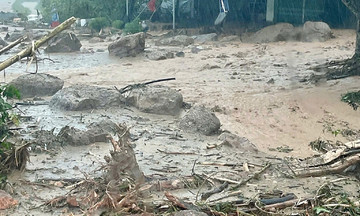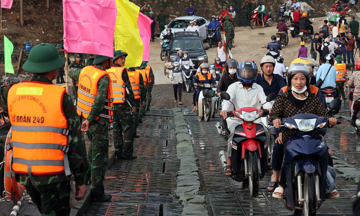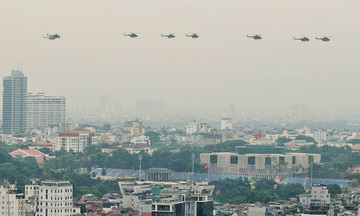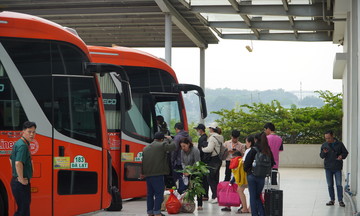On the night of 22/7, hours of heavy rain caused the Nam Mo River, flowing through Muong Xen town, to rise rapidly. In less than an hour, water overflowed onto main roads, isolating communities and sweeping away the belongings of many families.
"At past 9 p.m., I received a call from a resident reporting people trapped in Block 5. The water was rising very quickly, and any delay in rescue could be dangerous," recounted Vi Van Hieu, Commander of Muong Xen Commune's Military Command.
Hieu gathered his team, along with police and militia, and they used flashlights to navigate the flooded streets to the scene. They found a two-story house submerged in murky water, with the current raging around it, making it inaccessible by any vehicle.
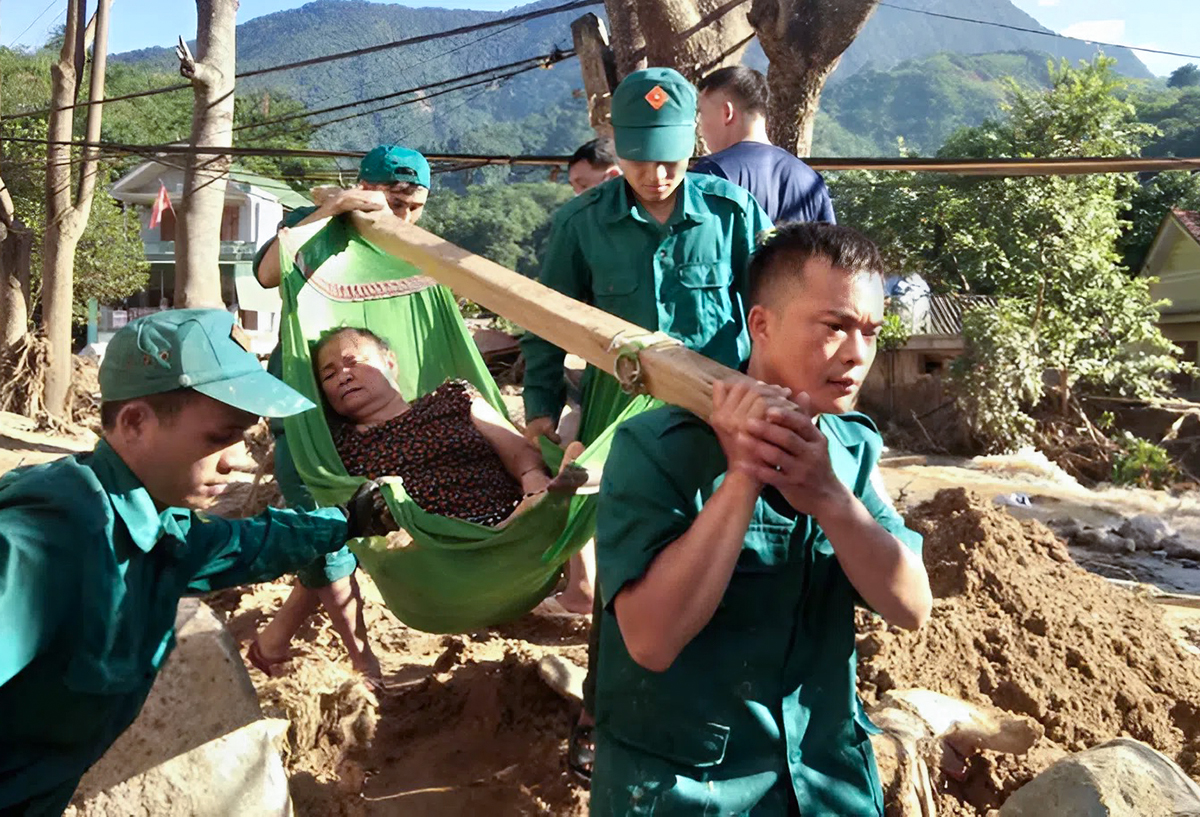 |
Vi Van Hieu (right corner) participated in transporting a patient in the flooded area of Ta Ca commune for emergency treatment in 10/2022. Photo: Provided by the subject. |
Inside the two-story house, five people – three men and two women – huddled upstairs. Seeing the rescuers' flashlights, they waved and cried for help.
The floodwaters were too deep and swift for Hieu's boat to reach the house and rescue everyone at once. Fearing they would lose valuable time as the water continued to rise, Hieu discussed the situation with the rescue team and proposed tying a rope around himself to swim to the house.
Hieu took off his jacket, put on a life vest, strapped a flashlight to his head, tied a large rope around his waist, took a deep breath, and entered the murky water, which was over 2 meters deep. Two teammates held the other end of the rope firmly, monitoring his every move from the shore.
After about 5 minutes of carefully pulling himself along the rope, Hieu reached the house, more than 30 meters from the rescue team. "Everyone, stay calm, I'm a commune official, here to rescue you. If you can swim, tell me; if not, don't be afraid. I'll get each of you out safely," Hieu recalled telling the trapped individuals.
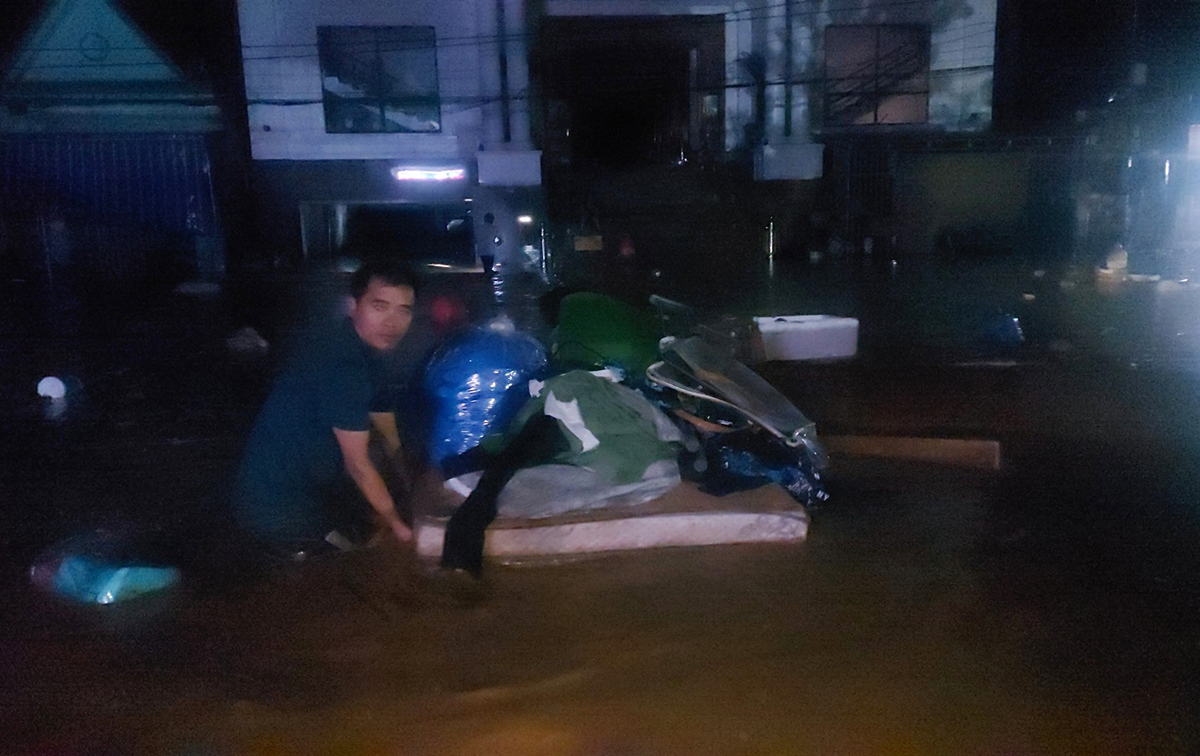 |
Residents of Muong Xen commune flee the flood on the night of 22/7. Photo: Hung Le. |
A minute later, the first person was secured with a rope and pulled toward the rescue team. "I had to stand against the current, preventing them from being swept away, before signaling my teammates to pull the rope," Hieu explained, adding that he repeated this process five times. Each return trip to the house meant facing the risk of being swept away by the strong current and intensifying rain.
After about 30 minutes, all five people were safely aboard the boat and transported to higher ground.
"After half an hour of clinging to the rope and swimming against the current, I was exhausted. But when the last person was pulled onto the boat, seeing their tears of relief, my colleagues and I were relieved that our plan had worked," Hieu shared.
Bui Thi Que, 37, one of the rescued, recounted how quickly the water rose, over a meter in an hour. They only had time to move some essential belongings upstairs before becoming trapped on the second floor.
"Looking out into the dark night, seeing the waves crashing against the house, the water reaching the edge of the attic, everyone was worried, constantly thinking about the worst-case scenario," Que said. Seeing Hieu tie the rope and swim towards them, she shouted to everyone, "We're saved!"
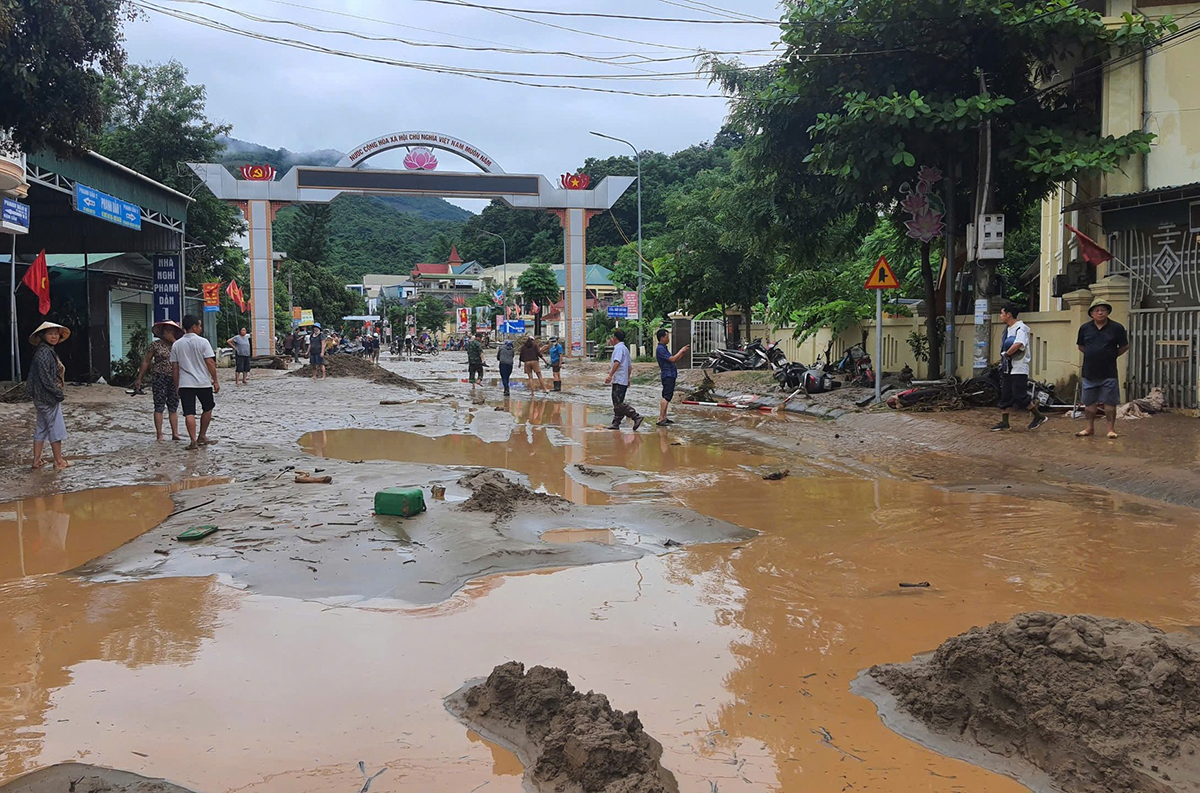 |
Muong Xen commune on the afternoon of 23/7, after the floodwaters receded. Photo: Hung Le. |
Influenced by Typhoon Wipha, from the night of the 21st to the end of 22/7, Nghe An province experienced heavy rainfall, totaling 100-200 mm, with Quy Chau recording 259 mm. Floodwaters from upstream caused widespread flooding, flash floods, and landslides in mountainous districts like Ky Son, Con Cuong, Quy Chau, and Que Phong.
Flood levels at Ban Ve Hydropower Reservoir reached 12,800 m3/s, far exceeding its design capacity. By 5:30 p.m. on 23/7, the floods had caused three deaths, one person missing, four injuries; over 3,700 houses were submerged, hundreds of roofs were blown off, and several villages were isolated.
By the morning of 24/7, the rain had stopped in the mountainous areas of Nghe An, but water from the upstream Ca River in Upper Laos continued to flow in. Hydropower plants continued to release water, causing flooding in Tuong Duong, Con Cuong, and Anh Son communes. National Highway 7 was cut off, paralyzing traffic.
Duc Hung



